10 Reasons Why Pet Snakes Make Great Pets
This page contains affiliate links. We may earn money or products from the companies mentioned in this post through our independently chosen links, which earn us a commission. Learn More
You probably don’t think of snakes as the most affectionate of pets. While that may be true, some species of snake are very docile and can form bonds with their owners. Even if you don’t spend a lot of one-on-one time with a pet snake, however, it can be a very interesting experience to keep one.
A snake may not be the perfect choice for everyone, but they do have a lot to offer the right person. Here are the top 10 reasons snakes make great pets:
#1. They Come In A Wide Range Of Sizes
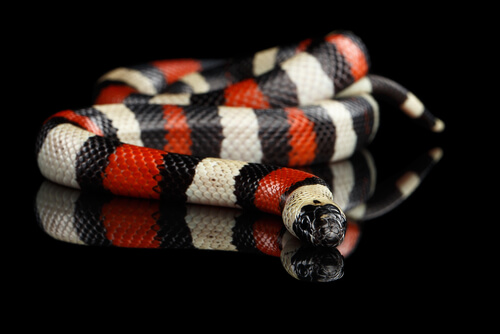
There are more than 3,000 species of snake in the world and they are found on every continent except Antarctica. Though there are thousands of species of snake out there, not all of them are suitable to be kept as pets. About 600 species are venomous and 200 have the capacity to kill a human.
If you’re looking for a type of pet that offers a great deal of variety in terms of size, color, and pattern, a snake might fit the bill.
Here are some of the most popular species of pet snake:
- Ball python (Python regius)
- Rosy boa (Charina trivirgata)
- Corn snake (Pantherophis guttata)
- Green tree python (Morelia viridis)
- Gopher snake (genus Pituophis)
- Red-tail boa (Boa constrictor)
- Burmese python (Python bivittatus)
- California king snake (genus Lempropeltis)
- Milk snake (Lampropeltis Triangulum)
- Black rat snake (Pantherophis obsoletus)
Though every species of snake has its own unique requirements for care, once you’ve gotten the hang of caring for one species you may find it easier to adjust to a new species later. This leaves you with plenty of opportunity to expand your horizons as a snake owner.
#2. Pet Snakes Don’t Require Exercise
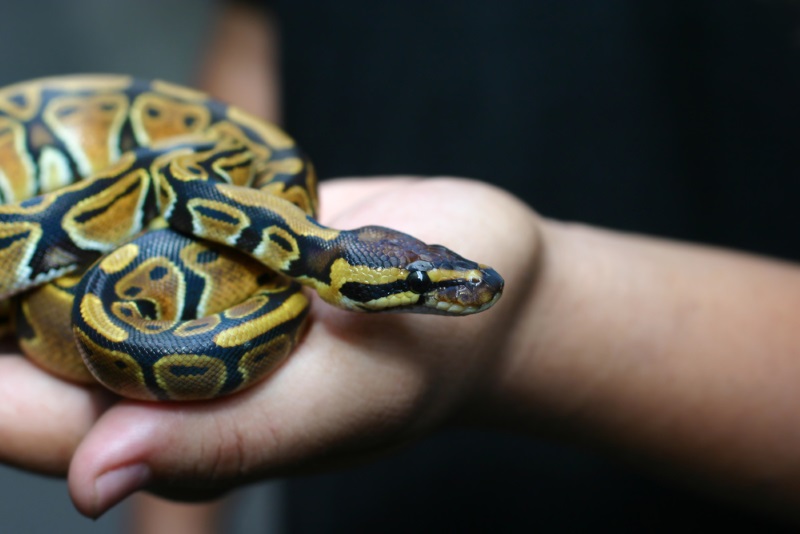
Exercise is important for humans and most pets, but snakes are different. Though some snakes can be fairly active, cold-blooded animals like snakes are actually evolved to conserve energy as much as possible. You won’t need to take your snake out for a walk and he probably won’t be interested in play time. It’s still important to provide your snake with adequate space to move around and exhibit natural behaviors, but toys and exercise wheels won’t be of much interest.
#3. It’s Pretty Easy To Keep Their Habitat Clean
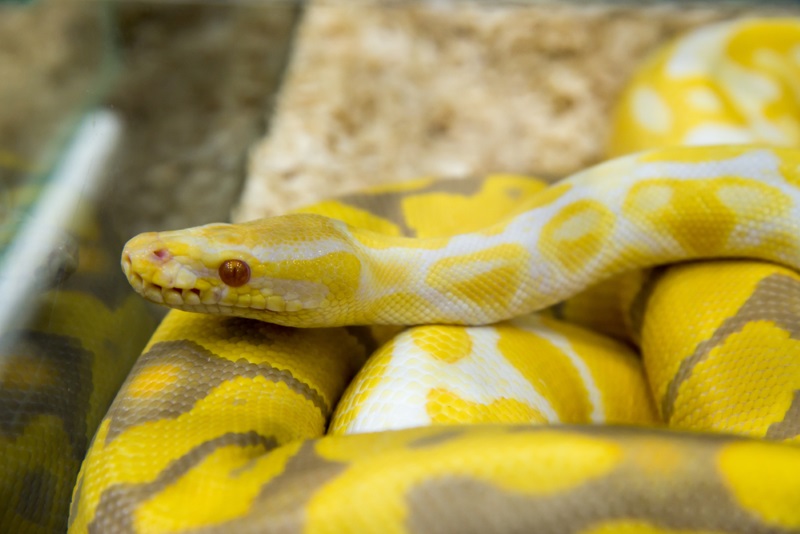
Providing your pet snake with a suitable habitat is essential. Your snake will spend most of its life in the enclosure, so it needs to provide for its needs. Once you have everything set up, however, maintenance is pretty simple. In most cases, you won’t need to do much besides a little spot-cleaning.
Remember, snakes are cold-blooded animals which means they rely on their environment to maintain their body temperature. That being the case, they have pretty slow metabolism, and they don’t digest food as quickly as warm-blooded animals. You’ll only need to feed your snake once a week or so, which means you won’t need to clean up after him every day.
#4. Pet Snakes Are Very Quiet, Both Day And Night
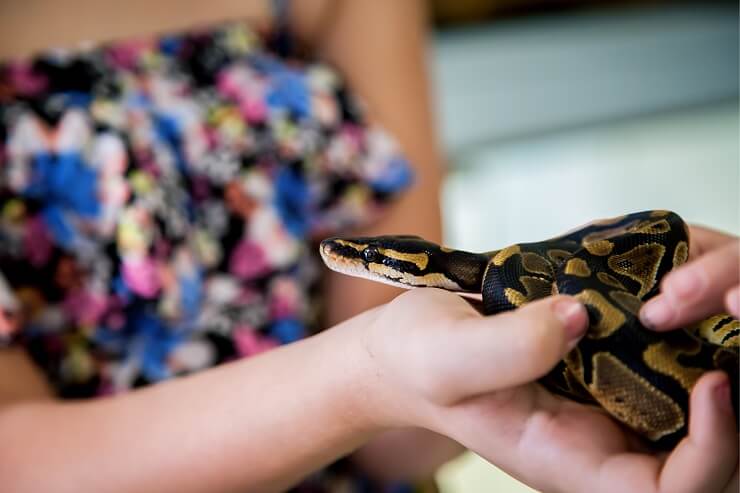
If you live in an apartment or share a living space with someone, you might be concerned about noise when choosing a pet. The good news is snakes don’t tend to make a lot of noise. In fact, the only snakes really capable of making much noise (like hissing and rattling) are species you wouldn’t want to keep as a pet anyway. Gopher snakes (also known as bull snakes) have been known to produce a low hissing noise, but it isn’t going to be loud enough to bother anyone.
#5. They Generally Don’t Need To Be Fed Every Day
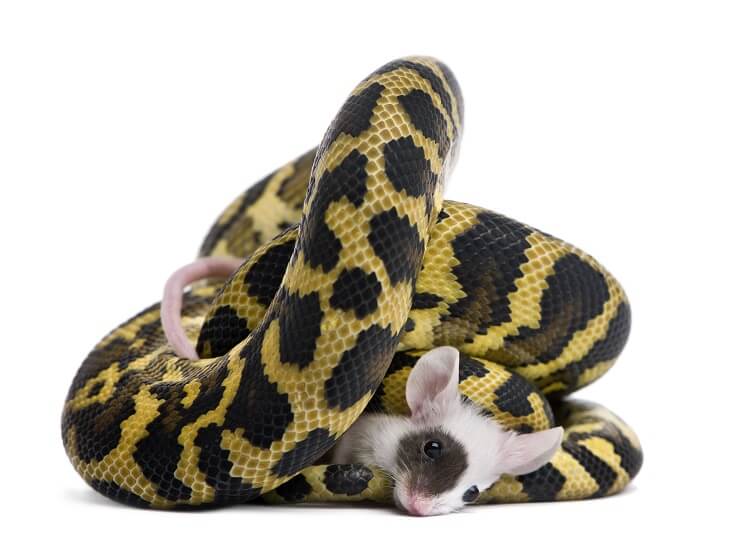
All snakes are carnivorous, but the type of prey they eat varies depending on the species. For smaller snakes, prey generally includes insects while larger species may eat rodents or even rabbits.
Most adult snakes only eat a few times a week or several times a month. That being the case, you’ll need to plan according to have the prey available at the right time – keep in mind that rodents will grow over time while cultivating your own insects may only grow to a point.
Again, the fact that your snake won’t eat every day means that you won’t have to clean up after him everyday either. Over time, you’ll get into a routine and have a feel for how often your snake eats and when you need to clean up afterward.
#6. Snakes Like To Spend Time In Their Enclosures
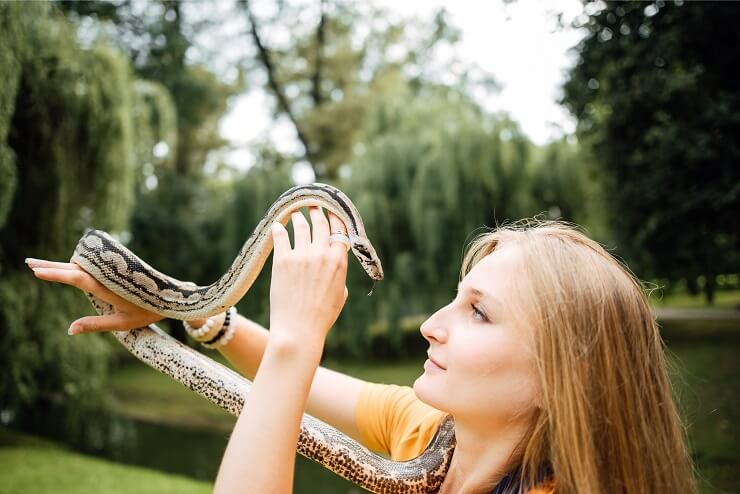
Traditional pets like cats and dogs need to have plenty of space to roam – they shouldn’t be kept chained or in a cage all the time. Your pet snake is the opposite – he’ll spend most of his time in his enclosure and will be perfectly happy to be there.
Because your snake will spend most of its life in its enclosure, it’s important to choose the right habitat.
The size of your snake cage will depend on the species of snake you choose. Juvenile snakes usually need 10 to 20 gallons for a tank, but adult snakes will need a lot more space. To give you a rough idea, a ball python needs about 3 to 6 square feet of space.
In addition to considering the size of your snake tank, think about the dimensions as well. Arboreal species like carpet pythons like to climb, so you’ll need a tank that provides vertical as well as horizontal space. Be sure to equip your tank properly to create the ideal conditions for your snake in terms of heat and humidity and keep a close eye on your tank conditions.
#7. You Don’t Have To Worry About Grooming
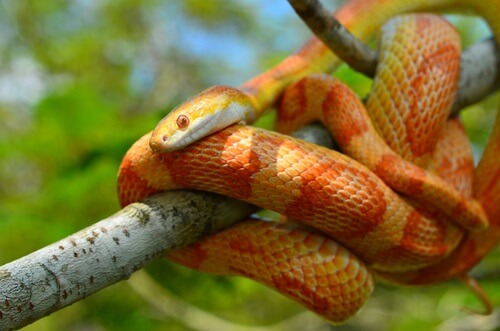
When you hear the word “shedding” you probably think of the fur cats, dogs, and other fuzzy animals leave all over your clothes and furniture. Snakes do shed, but not quite in the same way.
Snakes shed every few weeks while they are young, but the frequency will slow as they mature. The reason snakes shed is because their bodies continue to grow but their skin does not. As a result, the top layer of skin must be shed entirely to make room for new growth underneath.
This is a completely natural process and one your snake can complete on its own, so you don’t have to worry about it. No grooming required!
#8. Pet Snakes Can Be Tamed With Regular Handling
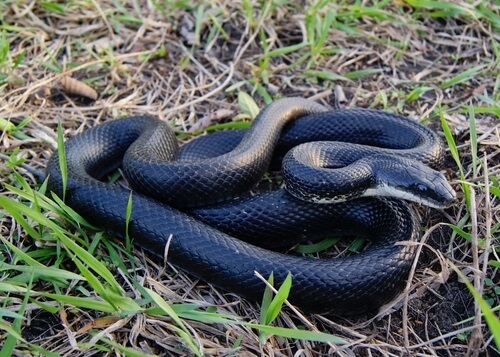
It’s important to remember that, unlike dogs and cats, snakes are not domesticated. Certain species like ball pythons and rosy boas are known for being friendly and docile, but you shouldn’t expect your snake to take much interest in interacting with you. Some species can be fairly aggressive by nature.
When it comes to taming your pet snake, keep in mind that your snake will always be somewhat wild. The term “tame” isn’t quite accurate, but you can make your snake calmer and more amenable to handling if you do it regularly. It’s particularly important to avoid keeping wild-caught snakes as pets.
To get your new pet used to handling, you should first give him 5 to 7 days to get used to its new home before you disturb it. Use caution when handling your pet snake for the first time and pay attention to its behavioral cues. It could take weeks or months for your snake to become comfortable, so don’t rush the process and only handle it as long as the snake seems unbothered to be held.
#9. They Require Less Daily Attention Than Other Pets

Some pet owners want a pet to provide companionship, but they aren’t particularly interested in doing a lot of work. If that sounds like you, a pet snake could be the perfect fit.
It’s important to remember that all pets come with a certain degree of responsibility. Aside from feeding your snake a few times a week (or a few times a month), there’s little else you need to do. Snakes have very slow metabolisms, so you won’t need to clean the tank very often and, when you do, spot-cleaning is generally all it takes. You won’t be putting in a lot of time each day cleaning up after your pet snake.
Not only is it fairly easy to maintain a pet snake’s habitat, but your snake won’t require a lot of attention or daily interaction, either. Snakes are solitary animals and while some species can become tame with regular handling, it’s not necessarily something they want or need.
#10. Outside Of The Initial Setup, They Are Fairly Inexpensive
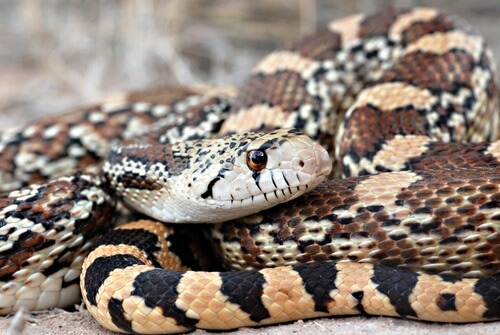
As we’ve already mentioned, pet snakes are perfectly happy to spend most of their time in their habitat. That being the case, however, it’s important to make sure that habitat is set up properly.
Though snakes aren’t always the most active creatures, some larger species may require a fairly large terrarium – arboreal species may require a significant amount of vertical space while others prefer horizontal space. The larger the cage, the more expensive it is likely to be. The good news is, once you get your snake’s habitat set up, the most significant cost is out of the way.
Depending which species you choose, buying a pet snake can be pricey as well. For popular species like corn snakes, gopher snakes, and ball pythons, however, you could easily spend $50 or less.
Once you have your snake and the habitat properly equipped, all that’s left is maintenance. You may notice an increase in utility bills to keep the snake tank heated, but it shouldn’t be significant. The cost to feed your snake may end up being more per feeding than some other pets, but you won’t have to do it every day, in most cases.
Is A Pet Snake Right For You?
Before bringing home a new pet, it’s important to do your research. Even if you’re an experienced pet owner, if you’ve never kept a reptile before you shouldn’t assume you’ll do well with a snake.
Snakes are very different from traditional pets like cats and dogs. Though they may not require such frequent feeding, they have very specific needs when it comes to their diet and habitat. Snakes are cold-blooded animals which means they rely on their environment to maintain the necessary body temperature to digest food and perform other essential bodily functions.
Though snakes can certainly be a challenge to keep, they do come with some unique benefits.
If you’re looking for a calm and quiet pet that doesn’t require a lot of interaction or attention, a snake could be the right choice. Snakes don’t require grooming and you’ll never have to take your snake outside to go for a walk. In fact, your snake probably wouldn’t care too much if you left him to his own devices much of the time (just remember frequent handling is necessary to keep your snake tame).
Whether you’re looking for a unique pet or one that doesn’t require a lot of daily maintenance, a pet snake could be the right fit. Just be sure to research the options to find the right species and to make sure you understand its requirements fully.
Frequently Asked Questions
Why are snakes not good pets?
Snakes are not always the right pet for everyone because they require specialized care and have specific habitat requirements. Up to 75% of reptiles die within one year of human captivity, snakes included, so a snake might not be the best choice for inexperienced pet owners.
Do snakes like to be held?
It depends on the species. Some of the more docile species like ball pythons and rosy boas are friendly and don’t mind handling – they may even come to like it. Other species, however, can be a little more difficult to tame. Venomous species should not be handled.
Do snakes recognize their owners?
While snakes don’t feel human emotions like affection, they can become comfortable with their owners through regular handling. Snakes may come to recognize their owner by smell and may enjoy their warmth during handling.
Do snakes get lonely?
No. Most pet snakes are solitary species that only come together with other snakes for the purpose of mating. It’s generally not recommended to keep two snakes together, especially of different species.


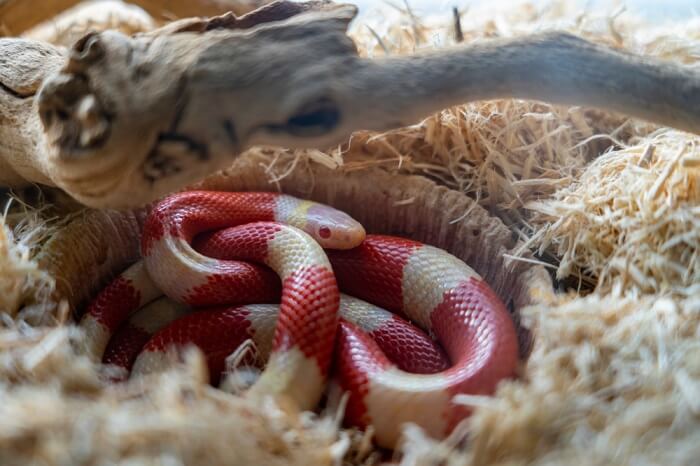
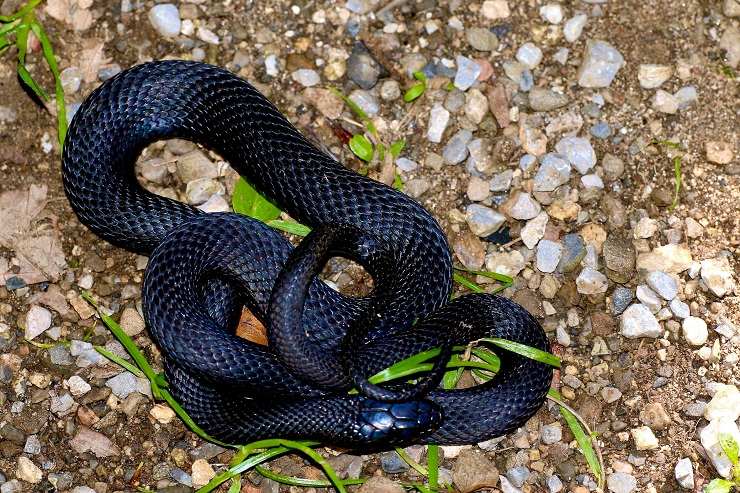
Nico Coby Sy
Just because snakes don't give affections unlike dogs and cats, it doesn't mean that they're bad pets. It's all about getting to know them in person as well as researching.
Kate Barrington
Great point, Nico! Snakes make excellent pets for the right owner!